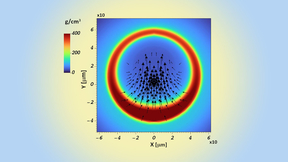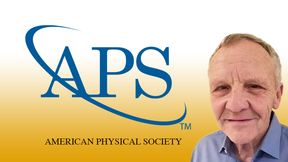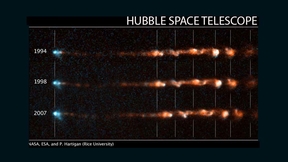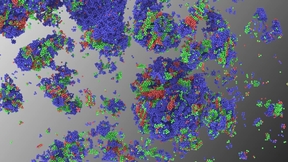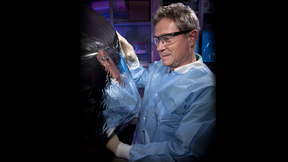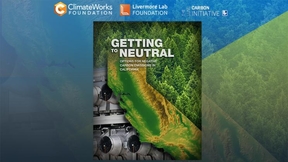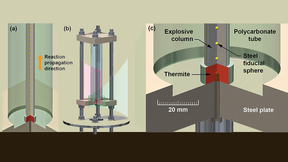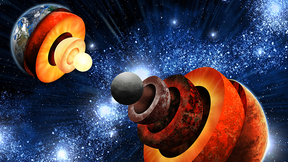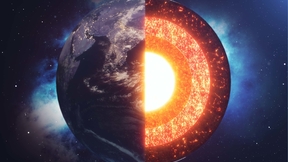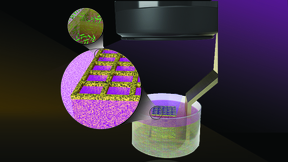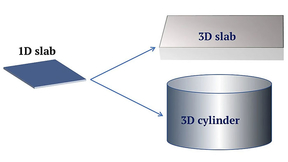Back
Physical and Life Sciences
Study reveals cause of 3D asymmetry in ICF implosions
Inertial confinement fusion (ICF) implosions require very high levels of symmetry in order to reach the high densities and temperatures required for fusion induced self-heating. Even percent-level deviations from perfect spherical symmetry can lead to significant distortions of the implosion and ultimately degrade fusion performance. To that end, researchers from Lawrence…
Retiring Director Bill Goldstein leaves behind a rich legacy of extraordinary growth, innovation for the Lab
Nearly a year into piloting a major scientific institution through one of the most taxing and disruptive global events in modern history, outgoing Livermore Lab Director Bill Goldstein is ready for a vacation. One of Goldstein’s first orders of business following his retirement on March 1 is returning to the lush slopes, coffee plantations and sandy beaches of Kona, Hawaii…
Tarver honored with American Physical Society award
Craig Tarver, a Lawrence Livermore National Laboratory (LLNL) retiree and consultant to the Lab’s Energetic Materials Center, has been honored with the American Physical Society’s (APS) 2021 George E. Duvall Shock Compression Science Award for “theoretical advancement of the understanding of shock-driven reactions and detonation in condensed phase explosives.” Since 1987,…
Magnetic fields drive astrophysical jet shapes
Outflows of matter are general features stemming from systems powered by compact objects such as black holes, active galactic nuclei, pulsar wind nebulae, accreting objects such as Young Stellar Objects (YSO) and mature stars such as our sun. But the shape of those outflows, or astrophysical jets, vary depending on the magnetic field around them. In new experiments, a…
LLNL scientists discover a new way that metals freeze at extreme conditions
Since the dawn of civilization, metallurgy has determined the fate of powerful cities, states and empires. Blacksmiths have harnessed the power of heat to melt simple metals that would then be cast into hard, sharp and shiny alloys. Varying process conditions, such as rate of cooling and composition, can lead to new materials with dramatically different mechanical…
Physics of particle dispersion may lend insight into reducing the airborne spread of COVID-19 virus
Lawrence Livermore National Laboratory (LLNL) scientists are leveraging their extensive experience studying the movement of airborne hazards to better understand the movement of virus-like particles through the air and to identify effective countermeasures. DNATrax released in a conference room.While the burden of airborne diseases is known to be large, its true scope is…
Moving to carbon neutrality: one year later
One year after publishing the groundbreaking "Getting to Neutral: Options for Negative Carbon Emissions in California," Lawrence Livermore National Laboratory (LLNL) has become a trusted adviser in the discussion of how to remove carbon dioxide from the air. In the report, LLNL scientists identified a robust suite of technologies to help California clear the last hurdle…
LLNL Weapon Engineers, Biologists Deliver Critical Samples to Identify Skin Proteins Left on IEDs
Following a terrorist bombing, can the bomb maker be identified by skin proteins left on the bomb components they handled? To address this question, Lawrence Livermore National Laboratory (LLNL) personnel from Weapons Complex Integration (WCI) and Global Security (GS) Forensic Science and Biosecurity Centers (FSC/BSC) subjected notional bomb components handled by LLNL…
LLNL weapon engineers, biologists deliver critical samples to identify skin proteins left on IEDs
Following a terrorist bombing, can the bomb maker be identified by skin proteins left on the bomb components they handled? To address this question, Lawrence Livermore National Laboratory (LLNL) personnel from Weapons Complex Integration (WCI) and Global Security (GS) Forensic Science and Biosecurity Centers (FSC/BSC) subjected notional bomb components handled by LLNL…
Research on transition phenomena to aid in improving safety of explosives
On Aug. 4, 2020, a massive explosion rocked Lebanon’s capital of Beirut, sending shockwaves through the city and shattering windows, reducing some buildings to rubble and killing at least 200 people. Officials have since traced the blast to a stockpile of more than 2,500 tons of confiscated ammonium nitrate stored in a port warehouse. While the official investigation is…
What Hollywood gets wrong, and right, about asteroids
Meet Kirsten Howley, the real-life astrophysicist working to prevent an asteroid “Armageddon” In the 1998 movie “Armageddon,” an asteroid the width of Texas is about to hit Earth. The heroes who stop it in the nick of time are a group of orange-suited Americans, all men. Life isn’t always like the movies. Not that an asteroid couldn’t slam into Earth, mind you. Asteroids —…
Lab team uses giant lasers to compress iron oxide, revealing the secret interior of rocky exoplanets
Advances in astronomical observations have resulted in the discovery of an extraordinary number of extrasolar planets, some of which are believed to have a rocky composition similar to Earth. Learning more about their interior structure could provide important clues about their potential habitability. Led by Lawrence Livermore National Laboratory (LLNL), a team of…
Lab researchers explore ‘learn-by-calibration’ approach to deep learning to accurately emulate scientific process
Lawrence Livermore National Laboratory (LLNL) computer scientists have developed a new deep learning approach to designing emulators for scientific processes that is more accurate and efficient than existing methods. In a paper published by Nature Communications, an LLNL team describes a “Learn-by-Calibrating” (LbC) method for creating powerful scientific emulators that…
Scientists measure temperature under shock conditions
Temperature is tough to measure, especially in shock compression experiments. A big challenge is having to account for thermal transport — the flow of energy in the form of heat. To better understand this challenge, researchers from Lawrence Livermore National Laboratory (LLNL) have taken important steps to show that thermal conduction is important and measurable at high…
Lab 3D-prints microbes to enhance biomaterials
Lawrence Livermore National Laboratory (LLNL) scientists have developed a new method for 3D printing living microbes in controlled patterns, expanding the potential for using engineered bacteria to recover rare-earth metals, clean wastewater, detect uranium and more. Through a novel technique that uses light and bacteria-infused resin to produce 3D-patterned microbes, the…
Formulating polymers that enhance explosives performance
The design of new explosive and propellant formulations, in compliance with insensitive munitions directives, require that performance be increased, while concurrently increasing stability and safety. Additional requirements include higher density, reduced environmental impact, improved mechanical properties, and extended service life. The combination of high explosives …
Tarver honored with APS shock compression science award
Craig Tarver (MSD) has been honored with the American Physical Society’s (APS’s) 2021 George E. Duvall Shock Compression Science Award for “theoretical advancement of the understanding of shock-driven reactions and detonation in condensed phase explosives.” Since 1968, the award—the highest offered by APS in shock compression science—has biennially recognized contributions…
Thin sample experiments help predict moisture sorption in larger samples
Over time, moisture can change a material’s physical and chemical properties, altering its performance and the performance of other materials in close proximity. This change in performance is especially a concern when considering materials used in the food, packaging, medicine, electronics, and construction industries. Understanding the material moisture capacity and…
Pitz elected fellow of Society of Automotive Engineers
Physicist Bill Pitz (MSD) has been elected as fellow of the Society of Automotive Engineers (SAE). Bill studies combustion phenomenon in various types of engines. The fellow grade of membership was established by the society in 1975 to honor and recognize important engineering, scientific, and leadership achievements that enhance the status of SAE’s contributions to the…
Using machine learning techniques to extract nanomaterial information from SEM images
Quantitative analysis of scanning electron microscopy (SEM) images is important for understanding the structural and morphological variations of nanomaterials. Information obtained from SEM images—such as the particle size, size distribution, and morphology—provide technical and scientific insights into the process of nanomaterial synthesis, fabrication, and manufacturing…


